March 30, 2012 @ 6:45 pm | Filed under:
Poetry  Yesterday I linked to a wonderful Billy Collins poem from the Poetry 180 website. That site’s a new discovery for me, but it’s been around a while and I feel like I must be the last poetry lover on the internet to learn about it. Just in case I’m wrong and you’ve missed it as well, here’s the link.
Yesterday I linked to a wonderful Billy Collins poem from the Poetry 180 website. That site’s a new discovery for me, but it’s been around a while and I feel like I must be the last poetry lover on the internet to learn about it. Just in case I’m wrong and you’ve missed it as well, here’s the link.
“The idea behind Poetry 180 is simple: to have a poem read each day to the students of American high schools across the country.”
We enjoyed the second poem today: “Sidekicks” by Ronald Koertge. Sparked a good discussion, and then we had to go look up all the cowboy-film sidekicks mentioned in the poem. I knew Gabby and Pancho, but wasn’t sure about Andy or Pat. The latter turned out to be Pat Buttram, who rode with Gene Autry. Here they are on YouTube (embedding’s disabled on the clip so I can’t post it here).
Gabby or Pat, Pancho or Andy remind us of a part
of ourselves,
the dependent part that can never grow up,
the part that is painfully eager to please,
always wants a hug and never gets enough…
I’m late to the party tonight, but here’s the Poetry Friday roundup, hosted this week by my juicy little universe.
March 29, 2012 @ 5:50 am | Filed under:
Events I have something special for you today: Bonny Glen’s first-ever guest post. Our good friend Dan Tapper worked at a rather amazing charity event last weekend, and when he related the story to us, I asked if he would share it here. Thanks, Dan.
Making a Difference, One Smile at a Time
by Dan Tapper
They came from as far away as Georgia, and as nearby as down the street. Different colors, different ages, different backgrounds. Some were college students and many were elderly on fixed incomes, though the majority qualified to be categorized as “working poor.” This is the group that used to be known as the working class in America. No more.
They all came to a bright, new college campus in Danbury, Connecticut – the richest state in the richest country in the world. They came by the hundreds in lines that stretched longer than football fields. They came for one reason and one reason only – to get free dental care. It was something they otherwise couldn’t afford.
They all came in need, and they all left with a smile. A healthier, more hopeful smile.

This past weekend, more than 2,000 people were treated as dental patients at the 5th Annual Connecticut Mission of Mercy, a free clinic that has been offered annually in Connecticut since 2008. America’s Mission of Mercy is a national project designed to provide essential emergency dental services for those who need them and can’t afford them, and also to raise awareness of the dental health crisis that exists in America. The first Mission of Mercy was held in rural Virginia in 2000 – in 2008, Connecticut became the 7th state to hold one. By the end of 2012, 23 different states will hold their own Missions of Mercy.
The name says it all – relieving people of dental pain is the epitome of a mission of mercy. Dental pain can ruin your day, can cause you to lose sleep, can destroy your mood and can make you not want to get out of bed in the morning. Dental distress can lead to greater health problems – poor dental health has been firmly linked to diabetes, heart disease and low birth weight babies. Dental health is medical health, period. (more…)
March 27, 2012 @ 6:50 pm | Filed under:
Books 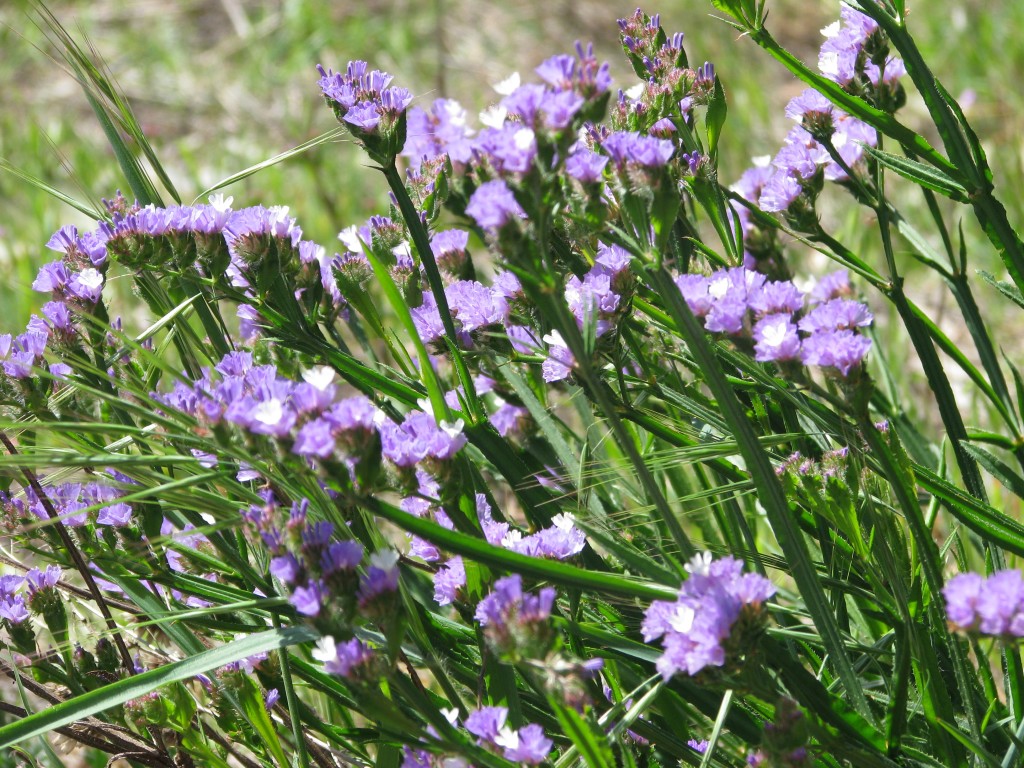
This exchange from Two Gardeners gave me a curious sort of comfort today. May, 1959. They’ve been corresponding occasionally for a year. Katharine writes:
Dear Miss Lawrence,
Can you ever forgive me for having been so rude as not to write you long before now to acknowledge all the helpful things you have done for me and for your good letters and postcards?
She hastens to explain that she had fallen ill and spent a long time recovering from a kidney infection. This apology is followed by several wonderful pages of garden notes and commentary. And finally:
This letter is much too long and I must wind it up fast. Our first calf was born today and another will be along soon…The first bantam chick has cracked its shell and it is suddenly hot, so spring must be here at last. The seventy-five chicks for broilers and laying hens have come out from under the brooder stove. We try to do much too much and our lives are too full. I’m sure yours must be, too, especially when you get letters of this length.
Elizabeth responds:
First, please believe that I never even notice when letters are not answered, much as I love the answers when they come. I can’t bear to think that you would ever have answering on your mind. And in turn please don’t fault me if I don’t answer. If I don’t by return mail, I probably never will. I have had to give up writing letters to my close friends. And answer only business letters; and garden ones, for as you know that is the only way to get any real information.
By this point in the correspondence it is clear they are on their way to becoming real friends—Katharine ends her letter with “And I find myself quoting ‘Elizabeth.’ Do I dare call you that? Anyway, I’ll sign myself, Katharine”; and Elizabeth’s reply opens with “Dear Katharine”—and I love seeing how they’re working out the relationship. The warmth and mutual respect, the delight in finding a conversation partner who brings wit, knowledge, and original thought to the discussion of one’s pet subjects. Surely many of us who’ve connected with one another here in blogland can relate…
And there they are, in the late ’50s, when there were only a handful of television channels, for Pete’s sake, and no internet, no social media, struggling to keep up a valued correspondence in the thick of a busy and sometimes bumpy life.
As I said, comforting indeed.
Have I mentioned lately how much I appreciate your comments here? And how I wish I were better at keeping up my end of these many correspondences, both in the comment box and outside it? 🙂
 I have to clarify something. In the Two Gardeners ramble I said Katharine White’s Onward and Upward in the Garden was the first horticultural tome I ever fell in love with, but that isn’t exactly true. At first I wrote “the first gardening book I ever fell in love with,” and immediately I knew that wasn’t right: that honor goes to (for me, as for so many others) The Secret Garden—a book I have read at least twenty times in my life, and I think that is a conservative estimate. It might be nearer thirty.
I have to clarify something. In the Two Gardeners ramble I said Katharine White’s Onward and Upward in the Garden was the first horticultural tome I ever fell in love with, but that isn’t exactly true. At first I wrote “the first gardening book I ever fell in love with,” and immediately I knew that wasn’t right: that honor goes to (for me, as for so many others) The Secret Garden—a book I have read at least twenty times in my life, and I think that is a conservative estimate. It might be nearer thirty.
So I changed “gardening book” to “horticultural tome,” not wanting, that day, to digress into the many pages of reasons why The Secret Garden is a book that shaped me, and either it was what taught me to thrill at the first sign of a green shoot poking out of cool spring soil, or else it gave me words to articulate that thrill I always felt. Either way, it was a book that explained me to me, and I would not be me without it. I was not temperamentally sour like Mary, nor sickly like Colin, nor wise like Dickon. I was probably more like Martha, the maid, than anyone else in that book, though I longed to comprehend the languages of foxes and larks, like Dickon, and to be daring and stubborn like Mary, and I admired the way Colin’s mind would fix on something and turn it over and over until he made sense of it. I understood Mary’s rush of emotion and thumping heart at the signs of spring creeping like a green mist over the dead, gray garden. I too yearned for my own bit of earth. (And got it: my mother gave us each a section of her flower bed to be our own. I grew snapdragons and moss roses, and they are still among my favorites and I cannot be without them.) Like Mary, I wanted to know the names of things and how to keep them “quite alive—quite,” and to converse with saucy robins and to smell the wind over the heather.
Sometimes I think there is no finer sentence in all of literature than: “She was standing inside the secret garden.”
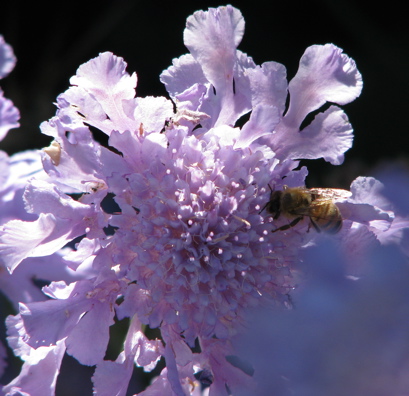
A book arrived yesterday that made me giddy. Scott saw me squealing over it and wanted to know what all the excitement was about. I tried to think how best to explain it to him.
“Okay, imagine that John Lennon and Elvis Presley were pen-pals. Say they had a lively correspondence, letters flying back and forth for years and years. Now imagine that this book is a collection of those letters.”
He raised his eyebrows. “Who are they really?”
I sighed happily. “Katharine White and Elizabeth Lawrence.”
Scott: “Um…?” But he knows me well. “Gardening?”
“Yes. Only my two favorite gardening writers EVER.”
“Like you had to tell me that.”
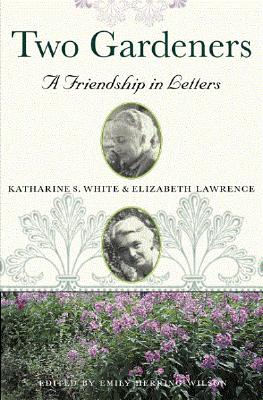 Everything about this book makes me smile. Editor Emily Herring Wilson’s introduction begins,
Everything about this book makes me smile. Editor Emily Herring Wilson’s introduction begins,
Gardeners are often good letter writers, and whether they write to describe what’s blooming today or to remember a flower from childhood, their letters are efforts to preserve memory. After they have put away tools in the shed, they write letters as a way to go on working in the garden. Because it is impossible to achieve the kind of perfection they dream of, they try to come to terms with their dreams by talking back and forth about their successes and failures….
Katharine S. White was, of course, the esteemed New Yorker editor whose occasional gardening columns are collected in the first horticultural tome ever to win my heart: Onward and Upward in the Garden. I had only to read her opening essay, the famous 1958 column that both celebrates and gently mocks gardening catalogs, critiquing them like works of literature, to know that here was a kindred spirit. Evidently Miss Elizabeth Lawrence, a knowledgeable and enthusiastic Southern garden writer (whose Gardening for Love I quoted the other day), felt the same spark of recognition. In May of 1958, Elizabeth wrote Katharine White a letter to say how much she’d enjoyed the New Yorker column, adding,
I asked [my friend] Mrs. Lamm if you were Mrs. E. B. White, and she said you were. So please tell Mr. E. B. that he has three generations of devoted readers in this family. My mother’s favorites were the one about leaving the mirror in the apartment vestibule, and the one about homemade bread. My niece adores Charlotte’s Web.
The mirror and bread essays (“Removal” and “Fro-Joy”) can be found in E. B. White’s One Man’s Meat, and if you know me at all, you know this sort of interwoven rabbit-trailing fills me with utter glee.
That first letter from Elizabeth to Katharine is fun, folksy, and smart, full of suggestions for other garden catalogs Mrs. White might enjoy. Several of her recommendations became fodder for subsequent ‘Onward and Upward’ columns. For nearly twenty years, until Katharine’s death in 1977, the two women wrote back and forth. So far, I have only read the first two of these letters. There must be hundreds of them in this book. I’m positively aflutter over the idea of such riches.
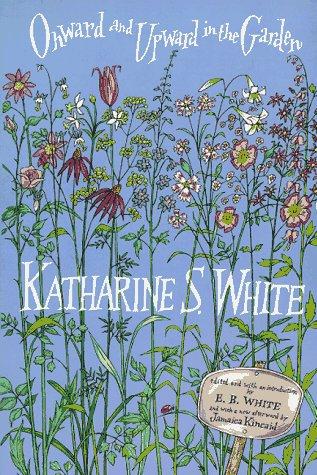 I didn’t get farther than the first letter last night because I found I had to interrupt it in the middle and go reread the Katharine White essay. Which led to another googlesome rabbit trail to see if any of the old catalogs she references can be read online. The Roses of Yesterday and Today catalog, whose author at the time, a Mr. Will Tillotson, had an “informative and occasionally rhapsodic” style that charmed Mrs. White no end, is still around—though Mr. Tillotson died in 1957, a fact Mrs. White adds in a sorrowful postscript at the end of her essay. The 1959 catalog seems to have been reprinted some years back. In her essay, Katharine quotes extensively from the 1955 and 1956 catalogs, which she says she borrowed from a friend, adding, “I must not keep them long, because though she has never bought a Tillotson rose, she reads Tillotson every night before she goes to sleep.”
I didn’t get farther than the first letter last night because I found I had to interrupt it in the middle and go reread the Katharine White essay. Which led to another googlesome rabbit trail to see if any of the old catalogs she references can be read online. The Roses of Yesterday and Today catalog, whose author at the time, a Mr. Will Tillotson, had an “informative and occasionally rhapsodic” style that charmed Mrs. White no end, is still around—though Mr. Tillotson died in 1957, a fact Mrs. White adds in a sorrowful postscript at the end of her essay. The 1959 catalog seems to have been reprinted some years back. In her essay, Katharine quotes extensively from the 1955 and 1956 catalogs, which she says she borrowed from a friend, adding, “I must not keep them long, because though she has never bought a Tillotson rose, she reads Tillotson every night before she goes to sleep.”
Mrs. White is similarly fond of Amos Pettingill, the “peppery” and “highly distinctive” persona holding forth in the pages of the old White Flower Farm catalogs. When I first read Onward and Upward as a college student (avoiding my English lit assignments, no doubt), I immediately sent away for a copy of the current White Flower catalog, even though I had 1) no garden; 2) no money; 3) no business poring over garden catalogs when I ought to have been plowing through my coursework. I can’t remember now whether Amos Pettingill was still dispensing wisdom in its pages. If he was, he had a new ghostwriter by then, since the original Amos, Mr. William Harris—a writer for Fortune magazine (and, with his wife, founder of White Flower Farm)—died while I was still in middle school. The welcome letter at the current White Flower website is signed “Amos Pettingill,” so someone is keeping up the tradition, I see.
Here’s an interesting bit of trivia I learned from the footnotes of Onward and Upward: William Harris’s wife was Jane Grant, a New York Times writer whose first husband was Harold Ross—Katharine White’s boss at The New Yorker. When Katharine wrote that essay, she had no idea she was singing the praises of her boss’s ex-wife’s new husband. Having just learned that Harold Ross was “one of the original members of the Algonquin Round Table,” I can’t help but imagine how Dorothy Parker must have chuckled wickedly when she heard. Because of course Dorothy Parker would have heard.
Elizabeth Lawrence’s taste in garden literature ran in a more down-home direction. Her Gardening for Love (polished and published after her death by Allen Lacy—the third name on my Top Three Garden Writers list) focuses on the advertisements of country farmers and farm wives in agricultural market bulletins. I tried very hard, one summer during graduate school, to track down some of these old bulletins, but that was before the Google and my search was unsatifactory. You can probably get them on eBay now, but I haven’t looked.
Ha, I couldn’t resist, I’ve just gone and looked. Not at eBay: a Google search for “market bulletins” turned up a link to the Louisiana Dept. of Agriculture’s current market bulletin, which you can download just like that. The ads—to which I turned immediately, since those were Miss Lawrence’s special fascination—read exactly like the ones she quotes from the ’50s and ’60s.
“Belinda’s dream rose, knock roses, 6 colors, drift ground cover roses, Little John bottle brush kaleidoscope abelia, Lady Banks roses, Shishi camellia, in 3-gal. containers, $10-$18/1; 30 varieties azaleas-camellias, $4-$25/1. L— C—, Husser, Tangipahoa Parish.”
This very same Louisiana Market Bulletin makes numerous appearances in Gardening for Love. And I know this post is already a giant game of Six Degrees of Separation (where perhaps E. B. White stands in for Kevin Bacon?), but there’s another literary connection worth mentioning: it was Elizabeth Lawrence’s friend Eudora Welty who first introduced her to the market bulletins.
“Years ago Eudora Welty told me about the old ladies who sell flowers through the mail,” writes Miss Lawrence in the opening chapter of Gardening for Love. “She put my name on the mailing list.”
She continues:
Like Eudora’s novels, the market bulletins are a social history of the Deep South. Through them I know the farmers and their dogs, their horses and mules, and the pedigrees of their cattle. I wonder whether the widow with no family ties found a home with an elderly couple needing someone to take care of them; whether the bachelor with no bad habits found a congenial job where the hunting and fishing were good; whether puppies got homes and lost dogs were found. And I wonder who bought the little farm with the pecan trees and good clear well water.
Most of all I like to think about the hard-working farm women who are never too tired, when their farm work is done, to cultivate their flowers gardens. They always find time to gather seeds, to dig and pack plants, and to send them off with friendly letters. To all parts of the country they send them off—yard plants, houseplants, and window plants. Reading the flower lists is like reading poetry, for the flowers are called by their sweet country names, many of them belonging to Shakespeare and the Bible.
Elizabeth Lawrence seems to have enjoyed the correspondence with her “hard-working farm women” as much as she loved their flowers, for the letters she received from them play a huge part in Gardening for Love. “The farm women are great letter writers,” she says, “and usually answer (delightfully and often at length) if a stamped and addressed envelope is enclosed.”
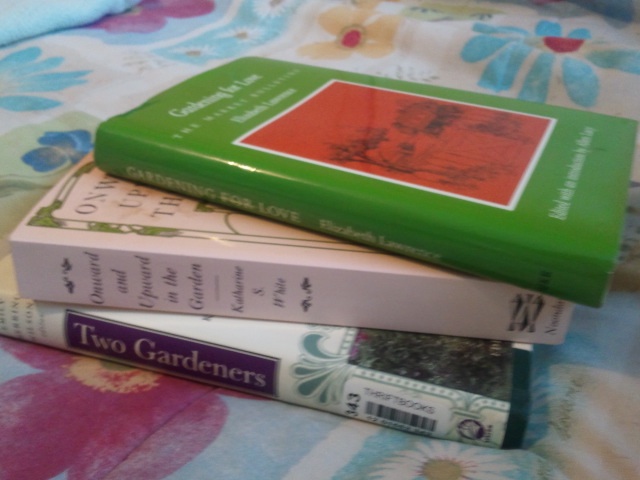
Of course, reading about these correspondences now, in 2012, I can’t help but think about the changed landscape of letters. I’ve never been very good, myself, at putting literal pen to actual paper, let alone following through with a stamp. Take away my keyboard and I go mute. We talk to each other now in blog posts and comment boxes, and in emails, IMs, texts, tweets, status updates—and this thrills me. I’m not a communications neo-Luddite. I love that we have so many ways to connect, nowadays. Still, it’s hard to imagine a collection of emails filling me with the same kind of soaring joy I feel at holding the White-Lawrence correspondence in my hands. “Dear Miss Lawrence,” writes Katharine in reply to Elizabeth’s first missive, “it was delightful to get your your letter…”
Yes, it really was. Now if you’ll excuse me, I think I’ll go read letter number three.

The week shimmers past quickly, and my head can’t quite keep up. I’m still chronicling Wondercon (although I will probably never get around to writing about the best part, the dinners with friends), and working, and repeatedly remembering that I keep forgetting to do the taxes.
(File under: Things that Make Me Wince.)

The best part of the morning was the nature walk. We’d just been reading about native San Diego flora and fauna in a “shrublands guide” published (and available for free download) by the California Chaparral Institute, and it was exciting to walk our familiar scrubby trails and greet the bushes by name. Some of the trees we knew already, like the downright Seussian bottle-brush tree, which grows in yards all over the city, but I’ve never before seen it bleed. Ruby sap, glinting in the sun, seeping through scarred bark. One could almost hear the Ents weeping.
I love knowing the names of things. In a way, names are my favorite things of all: the way a name lets you know a thing (bush, tree, flower, bird, person). What used to be a haze of indeterminate bushes becomes manzanita, scrub oak, chamise, sagebrush, buckwheat, each with a voice of its own.

The kids are more interested in birds than bushes. We create a ruckus as we go, and most of the wild things scatter. Only the hummingbirds ignore us. They are the Hermias of the bird world: though they be but little, they are fierce.

Under one of the bushes in the top photo, Beanie found a sort of burrow: flattened grass, a litter of empty snail shells. What lunches there, we’d like to know?

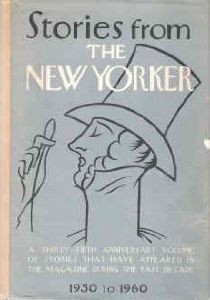 Katharine S. White to Elizabeth Lawrence, March 17, 1960:
Katharine S. White to Elizabeth Lawrence, March 17, 1960:












